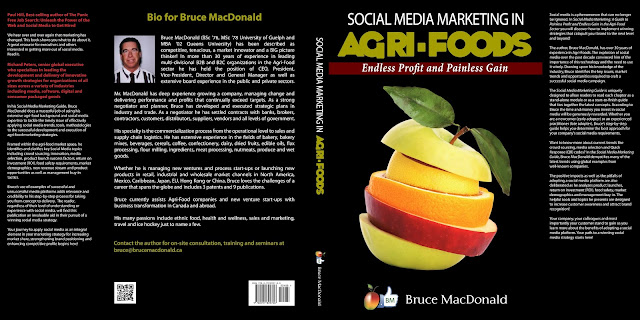STUDY FINDS INDUSTRY'S SODIUM REDUCTION EFFORTS INCONSISTENT
Posted May 13, 2013 in Food Product Design.
WASHINGTON—Voluntary reductions in sodium levels in processed and restaurant foods is inconsistent and slow, according to a new study published today in the journal JAMA Internal Medicine. The findings suggest despite food industry pledges to reduce sodium in products, the average sodium content in 402 packaged foods tracked between 2005 and 2011 declined by just 3.5%.
According to lead author Michael F. Jacobson, Ph.D., of the Center for Science in the Public Interest (CSPI), even though public health officials have been warning about excess sodium’s role in promoting high blood pressure, stroke and heart disease, chain restaurants actually increased sodium slightly in the 78 items tracked by an average of 2.6%.
For the study, researchers collected data from Nutrition Facts labels for almost 500 food products in 2005, 2008 and again in 2011. Next, they measured the sodium content in selected processed foods and fast-food restaurant foods in those years. Between 2005 and 2011, the sodium content in 402 processed foods declined by approximately 3.5%, while the sodium content in 78 fast-food restaurant products increased by 2.6%. Although some products showed decreases of at least 30%, a greater number of products showed increases of at least 30%. The predominant finding is the absence of anyappreciable or statistically significant changes in sodium content during six years.
The average sodium in the 12 varieties of barbecue sauce tracked by CSPI increased by 6.3%, the average sodium in 11 varieties of Caesar salad dressing increased by 3.7%, and the average sodium in 7 varieties of 100% whole wheat bread increased by 3.6%. On the brighter side, the categories of fresh or frozen pork, canned diced tomatoes, canned white tuna, vegetable soup, and sliced turkey breast all saw average reductions in sodium of more than 20%.
CSPI found that sodium levels varied widely among brands of similar products. One brand of tomato paste had more than five times as much sodium as the brand with the least, and ounce for ounce, McDonald’s Quarter Pounder with Cheese had 34% more sodium than Burger King’s similar Original Whopper with Cheese. That suggests that companies at the higher end in sodium could easily reduce levels and still have highly marketable foods.
“The strategy of relying on the food industry to voluntarily reduce sodium has proven to be a public health disaster," Jacobson said. “Inaction on the part of industry and the federal government is condemning too many Americans to entirely preventable heart attacks, strokes, and deaths each year."
“The current high levels of sodium in packaged and restaurant foods, if not reduced, will likely cause at least 1 million deaths and $100 billion in health-care costs in the coming decade," said co-author Stephen Havas of the Northwestern University Feinberg School of Medicine. “Action by the FDA requiring the food industry to lower sodium in our food supply is long overdue and should begin without further delay. The Obama administration should take action forthwith."
The authors concluded that stronger action in the for of phased-in limits on sodium levels set by the federal government is needed to lower sodium levels and reduce the prevalence of hypertension and cardiovascular disease.
In February 2013, New York City Mayor Michael Bloomberg announced 21 companies met one or more of their voluntary commitments to reduce sodium content in prepackaged or restaurant foods as part of the National Salt Reduction Initiative, the first-ever nationwide partnership to reduce sodium in the U.S. food supply.
Researchers have estimated that reducing daily sodium intake by 1,200 milligrams can prevent up to 92,000 deaths and save up to $24 billion in health care costs each year. Nearly 80% of salt in the U.S. diet comes from packaged or restaurant foods, not table salt or home cooking, making it challenging for any individual to monitor sodium intake, and choose to decrease sodium intake. Approximately, 90% of Americans consume too much sodium, much of which comes from foods that do not always taste salty, such as bread, cold-cuts, cookies or tomato sauce.
In February 2013, New York City Mayor Michael Bloomberg announced 21 companies met one or more of their voluntary commitments to reduce sodium content in prepackaged or restaurant foods as part of the National Salt Reduction Initiative, the first-ever nationwide partnership to reduce sodium in the U.S. food supply.
Researchers have estimated that reducing daily sodium intake by 1,200 milligrams can prevent up to 92,000 deaths and save up to $24 billion in health care costs each year. Nearly 80% of salt in the U.S. diet comes from packaged or restaurant foods, not table salt or home cooking, making it challenging for any individual to monitor sodium intake, and choose to decrease sodium intake. Approximately, 90% of Americans consume too much sodium, much of which comes from foods that do not always taste salty, such as bread, cold-cuts, cookies or tomato sauce.
Sources:
Check out my latest e-book entitled: "Social Media Marketing in Agri-Foods: Endless Profit and Painless Gain".
The book is available on Amazon and Kindle for $4.99 USD. Visit amazon/Kindle to order now:
http://www.amazon.ca/Social-Media-Marketing-Agri-Foods-ebook/dp/B00C42OB3E/ref=sr_1_1?s=digital-text&ie=UTF8&qid=1364756966&sr=1-1
Written by Bruce MacDonald, a 30 year veteran of the Agri-food industry, in "Social Media Marketing in Agri-Foods: Endless Profit and Painless Gain", Bruce applies his background and expertise in Agri-foods and social media to the latest trends, tools and methodologies needed to craft a successful on-line campaign. While the book focuses on the Agri-food market specifically, I believe that many of the points Bruce makes are equally applicable to most other industries.

No comments:
Post a Comment